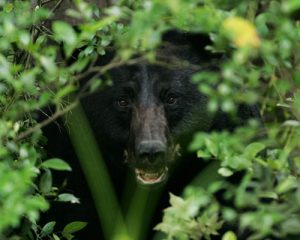
Florida’s black bear population is booming, according to new research by Dr. Joseph D. Clark of the U.S. Geological Survey and the University of Tennessee.
Data collected by Florida Fish and Wildlife Conservation Commission (FWC) staff and partners in 2014 and 2015 and analyzed by Dr. Clark’s team have confirmed that Florida’s bear population is robust and widespread.
The final estimates indicate that Florida’s statewide bear population now stands at 4,030, up from a few hundred bears in the 1970s.
The final estimate represents a refinement of the preliminary March 2016 estimate of 4,350 bears and is based on high-resolution modelling that incorporated specific habitat features in each bear management unit studied.
The final population estimate indicates a bear population 48 percent larger than previous estimates done in the early 2000s. In addition, the current bear range is 45 percent larger than the range map from the early 2000s.
Florida’s black bear population growth and range expansion reflects how conservation measures have propelled the growth of bear populations from the 1970s level of 300 to 500 bears to their abundant status today.
Dr. Joseph D. Clark, one of the nation’s leading bear scientists, is Branch Chief of the U.S. Geological Survey’s Southern Appalachian Field Branch (SAFB), located at the University of Tennessee. Dr. Clark holds an Adjunct Professor appointment in the Department of Forestry, Wildlife and Fisheries.
SAFB conducts hypothesis-driven environmental research focusing on carnivore ecology, population dynamics and habitat modeling.
More information is available on the Florida Fish and Wildlife Conservation Commission website.
source: Florida Fish and Wildlife Conservation Commission